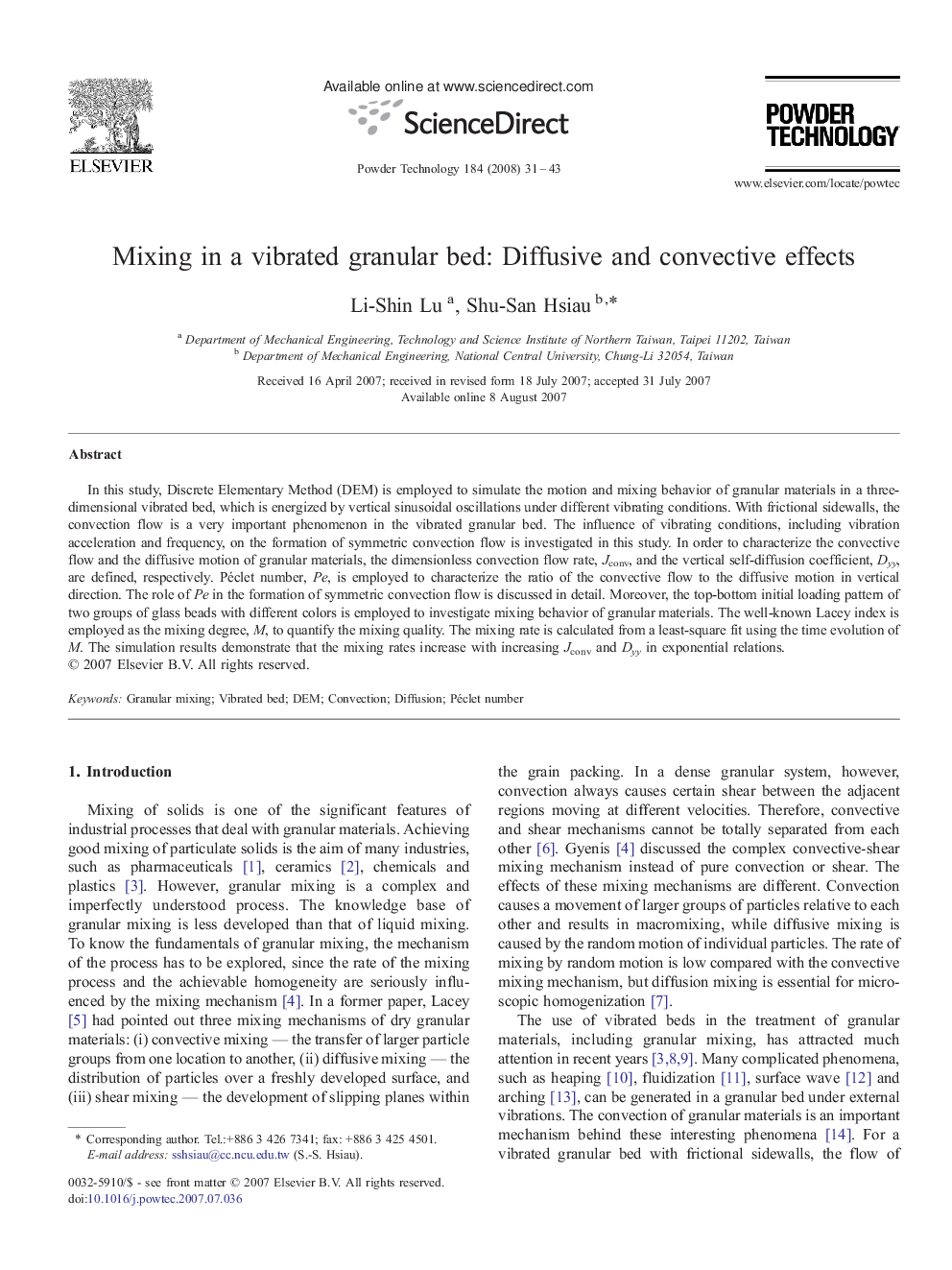| کد مقاله | کد نشریه | سال انتشار | مقاله انگلیسی | نسخه تمام متن |
|---|---|---|---|---|
| 238896 | 465782 | 2008 | 13 صفحه PDF | دانلود رایگان |

In this study, Discrete Elementary Method (DEM) is employed to simulate the motion and mixing behavior of granular materials in a three-dimensional vibrated bed, which is energized by vertical sinusoidal oscillations under different vibrating conditions. With frictional sidewalls, the convection flow is a very important phenomenon in the vibrated granular bed. The influence of vibrating conditions, including vibration acceleration and frequency, on the formation of symmetric convection flow is investigated in this study. In order to characterize the convective flow and the diffusive motion of granular materials, the dimensionless convection flow rate, Jconv, and the vertical self-diffusion coefficient, Dyy, are defined, respectively. Péclet number, Pe, is employed to characterize the ratio of the convective flow to the diffusive motion in vertical direction. The role of Pe in the formation of symmetric convection flow is discussed in detail. Moreover, the top-bottom initial loading pattern of two groups of glass beads with different colors is employed to investigate mixing behavior of granular materials. The well-known Lacey index is employed as the mixing degree, M, to quantify the mixing quality. The mixing rate is calculated from a least-square fit using the time evolution of M. The simulation results demonstrate that the mixing rates increase with increasing Jconv and Dyy in exponential relations.
Péclet number characterizes the ratio of convective flow to diffusive motion in vertical direction. Pe increases first and then decreases with increasing vibration acceleration, Γ. The symmetric convection flow is formed at the inflection point (Γ = Γinf). The mixing rate increases rapidly as Γ < Γinf due to the stronger convective effect and slowly as Γ > Γinf because of the stronger diffusion effect.Figure optionsDownload as PowerPoint slide
Journal: Powder Technology - Volume 184, Issue 1, 6 May 2008, Pages 31–43